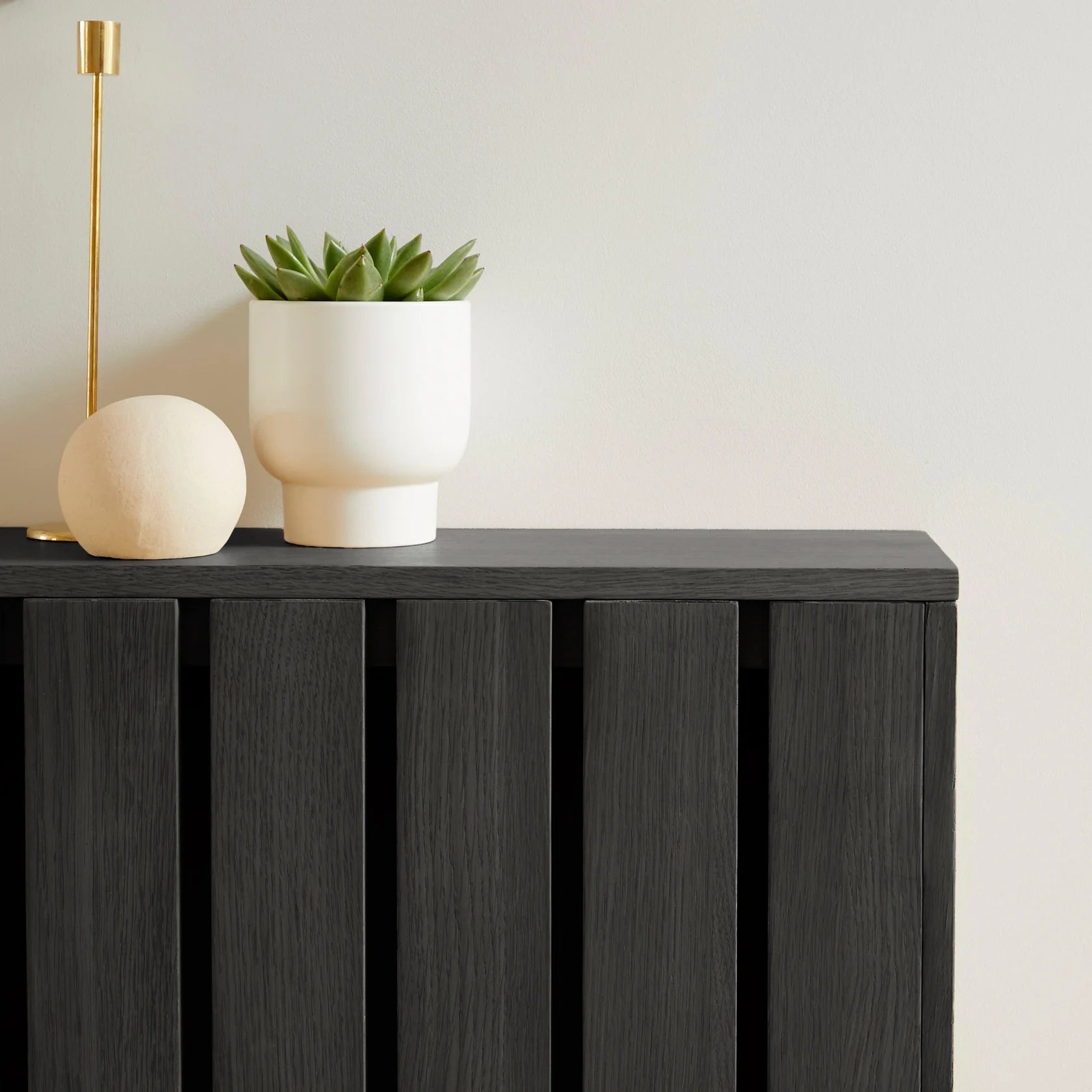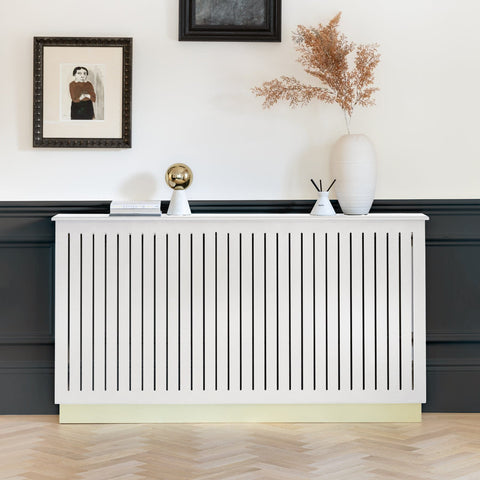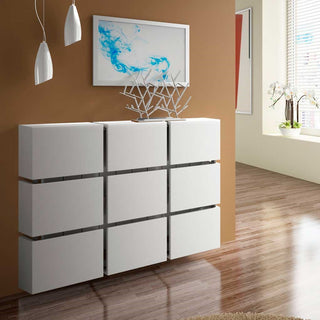

Radiator covers serve as a pivotal element in modern interior design, merging practicality with aesthetic appeal. By providing safety against potential burns and enhancing heat efficiency, these covers address both functional and decorative needs within a home.
Available in a variety of materials and styles, they can seamlessly integrate into any room's design scheme. However, the selection process can be complex, requiring careful consideration of factors such as material, style, and installation.
Understanding these nuances can greatly elevate the overall ambiance of your living spaces. What might those considerations entail?
Radiator covers offer numerous advantages that enhance both the functionality and aesthetics of a space. Primarily, they provide a protective barrier, safeguarding children and pets from accidental burns or injuries associated with hot surfaces.
Additionally, these covers can notably improve energy efficiency by promoting better heat distribution, ensuring that warmth is evenly spread throughout the room. Aesthetic appeal is another key benefit; radiator covers can be designed to match the decor of any room, transforming unsightly radiators into stylish elements that complement the overall interior design.
Moreover, they create additional space for displaying decorative items or functional surfaces. Overall, radiator covers are a practical solution that balances safety, efficiency, and visual enhancement in residential and commercial environments.
There are various types of radiator covers available, each designed to meet specific needs and preferences. Wooden radiator covers are popular for their aesthetic appeal and warmth, often fitting seamlessly into traditional interiors.
Metal covers, on the other hand, provide durability and a modern look, making them suitable for contemporary spaces. For those seeking versatility, adjustable covers can accommodate different radiator sizes while maintaining style. Additionally, custom-built radiator covers allow for personalized designs that cater to unique room layouts.
Some covers also incorporate shelving or storage options, maximizing functionality. Finally, decorative radiator covers feature intricate designs or patterns, enhancing the room's visual interest while serving the practical purpose of concealing the radiator.

Often overlooked, radiator covers can greatly enhance the aesthetic of any room while serving a practical purpose. For living rooms, consider sleek, modern designs that blend with contemporary furnishings, utilizing neutral colors to create a harmonious look.
In bedrooms, opt for decorative covers that incorporate storage solutions, doubling as a stylish bench or shelf. In kitchens, choose designs that complement cabinetry and offer a surface for decor or plants. For bathrooms, minimalist covers can provide a clean, streamlined appearance, maintaining the space's tranquility.
Finally, in home offices, select multifunctional covers that can serve as additional workspace while reflecting your personal style. Thoughtfully designed radiator covers can seamlessly integrate into any environment, enhancing both functionality and visual appeal.
The choice of materials for radiator covers greatly influences their durability, aesthetic appeal, and functionality. Commonly used materials include wood, metal, and MDF (medium-density fiberboard). Wooden covers offer a warm, classic look and can be stained or painted to match any decor.
Metal options, such as aluminum or steel, provide a modern, sleek appearance and are often more resistant to wear and tear. MDF is a cost-effective alternative, combining versatility with a smooth finish, making it easy to customize.
Each material has its benefits; for instance, metal may conduct heat efficiently, while wood can add a rustic charm. Ultimately, selecting the right material guarantees that the radiator cover complements the room while serving its primary purpose effectively.

Selecting the right radiator cover involves considering several factors that align with both functionality and aesthetic preferences. First, assess the size and shape of your radiator, guaranteeing the cover fits appropriately without obstructing heat flow.
Next, consider the material; wood offers a classic look, while metal provides a sleek, modern aesthetic. Additionally, evaluate the design style of your room; a cover should complement existing decor, whether traditional or contemporary.
Ventilation is vital; choose a cover with adequate slats or perforations to guarantee efficient heat distribution. Finally, think about ease of cleaning and maintenance-select materials that are durable and easy to maintain to enhance longevity. By balancing these elements, you can choose a radiator cover that enhances your space effectively.
When installing a radiator cover, it is essential to assure that the unit is securely positioned and aligned with the radiator for ideal functionality. Begin by measuring the radiator dimensions to assure a proper fit. Use a level to verify that the cover is straight, as an uneven installation can affect performance and aesthetic appeal.
Secure the cover with brackets or screws as recommended by the manufacturer. For maintenance, regularly dust the cover and clean it with a damp cloth to prevent grime buildup. Avoid placing heavy items on the cover, as this can lead to structural damage.
Additionally, check for any signs of warping or deterioration, and replace the cover if necessary to maintain both safety and efficiency.

Radiator covers can impact heating efficiency depending on their design and material. If a cover obstructs airflow or is poorly insulated, it may hinder the heat distribution within a room. Conversely, well-designed covers can enhance aesthetics without greatly compromising performance. It is essential to select covers that allow for adequate ventilation and heat radiation to maintain ideal heating efficiency while providing a visually appealing solution for your space.
Installing a radiator cover can often be a feasible DIY project for homeowners with basic carpentry skills. However, it is crucial to contemplate the specific design and complexity of the cover, as well as the layout of your radiator. If you are unsure or lack the necessary tools, enlisting the help of a professional can guarantee a precise fit and proper installation, ultimately enhancing both functionality and aesthetics in your space.
Installing radiator covers can be relatively straightforward for those with basic DIY skills, as most models are designed for easy assembly. Typically, they require minimal tools and can be fitted over existing radiators without extensive modifications. However, the complexity may vary depending on the design and specific measurements of your radiator. It is advisable to carefully follow manufacturer instructions to guarantee a proper fit and secure installation for maximum functionality and aesthetics.